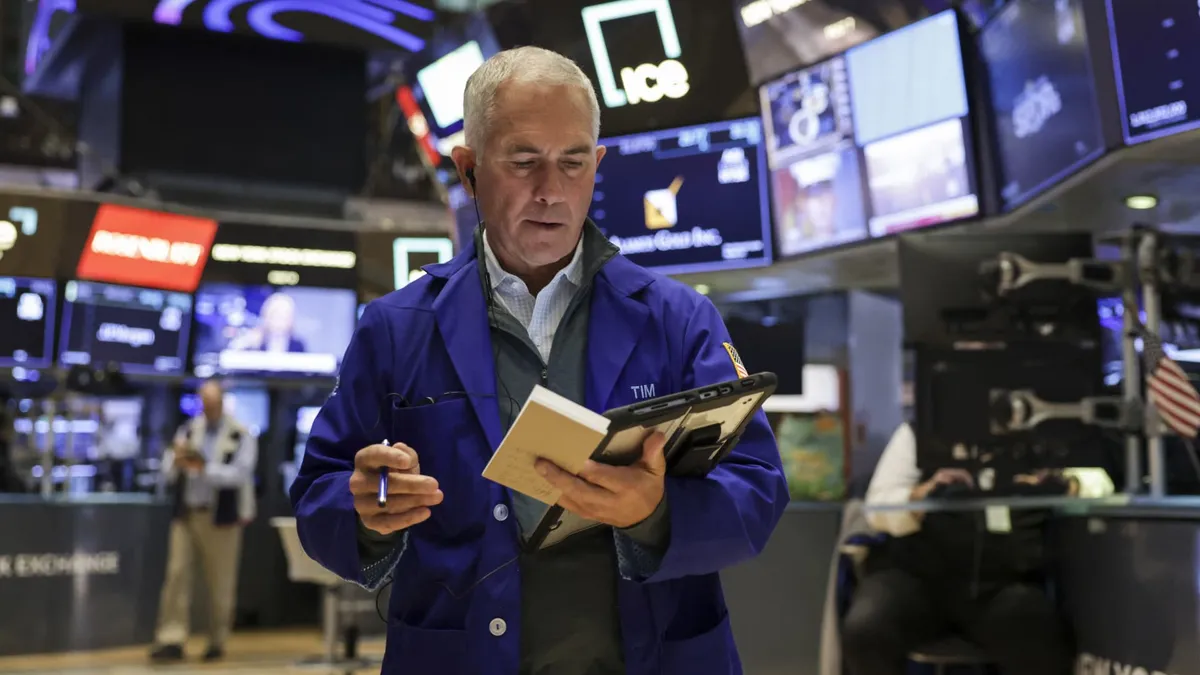
Stock futures experienced a notable rise on Thursday night as investors delved into several crucial earnings reports released by major Big Tech companies. Specifically, futures linked to the Dow Jones Industrial Average increased by 17 points, equivalent to a 0.05% gain. Additionally, S&P futures rose by 0.5%, while Nasdaq 100 futures surged by 1%. The earnings results from Apple and Amazon, which were announced after market hours on Thursday, concluded a significant week for technology earnings.
Amazon's stock witnessed a remarkable rally, climbing over 13% after the e-commerce giant reported a 20% increase in revenue from its cloud computing unit for the third quarter, surpassing Wall Street's expectations. In contrast, Apple shares rose by approximately 3% following its robust fiscal fourth-quarter earnings report and an optimistic forecast for the upcoming December quarter. Additionally, Netflix, the streaming powerhouse, also saw a gain of more than 3% after announcing a 10-for-1 stock split.
Amidst these developments, Courtney Garcia, a senior wealth advisor at Payne Capital Management, shared insights during Thursday's segment of CNBC's Closing Bell Overtime. She emphasized the importance of analyzing these earnings reports particularly during a period of government shutdown, stating, "We really have to look at these earnings and see how companies are faring and how their consumers are faring. The fact that we're continuing to see this all come out positive is generally a good sign for the economy moving forward."
Despite the positive sentiment surrounding tech earnings, U.S. stocks concluded Thursday’s trading session on a lackluster note, with all major benchmark indexes finishing in the red. The Dow Jones Industrial Average decreased by nearly 110 points, translating to a decline of about 0.2%. The S&P 500 and Nasdaq Composite experienced losses of 0.99% and 1.58%, respectively, primarily due to declines in prominent tech stocks such as Meta, Microsoft, and Nvidia, driven by concerns regarding increasing spending on artificial intelligence.
In a significant geopolitical development, former President Donald Trump and Chinese President Xi Jinping reached a one-year trade truce during their meeting in South Korea on Thursday. This agreement alleviated some investor apprehensions regarding a potential all-out trade war between the two nations. Trump announced an immediate 10% reduction in tariffs on China related to fentanyl, lowering the overall levies on Chinese goods to approximately 47%. Conversely, Beijing agreed to pause its export controls on rare earths for one year, although other contentious issues, including export controls on Nvidia's advanced AI chips and the divestiture of U.S. operations of TikTok, remain unresolved.
Despite the challenges, U.S. stock indexes are positioned to conclude a positive week and month. The S&P 500 has recorded a gain of 0.45% for the week, while the tech-heavy Nasdaq and Dow have seen increases of approximately 1.6% and 0.7%, respectively. October, historically known for some of the most significant one-day losses in stock market history, has seen the S&P 500 rise by 2% throughout the month. The Nasdaq has surged nearly 4.1%, and the 30-stock Dow has experienced a 2.4% increase month to date. Notably, the Dow is on track for its sixth consecutive positive month, a feat not achieved since 2018.